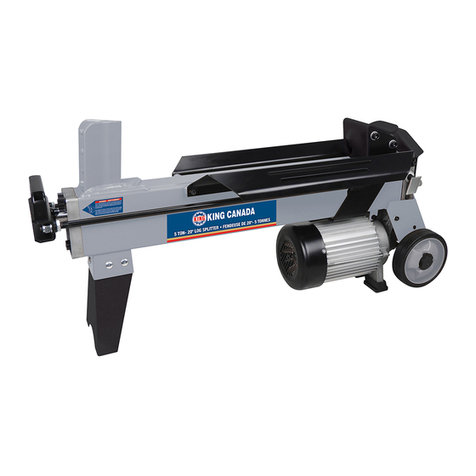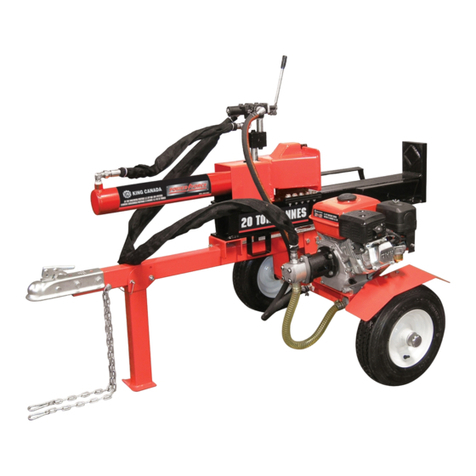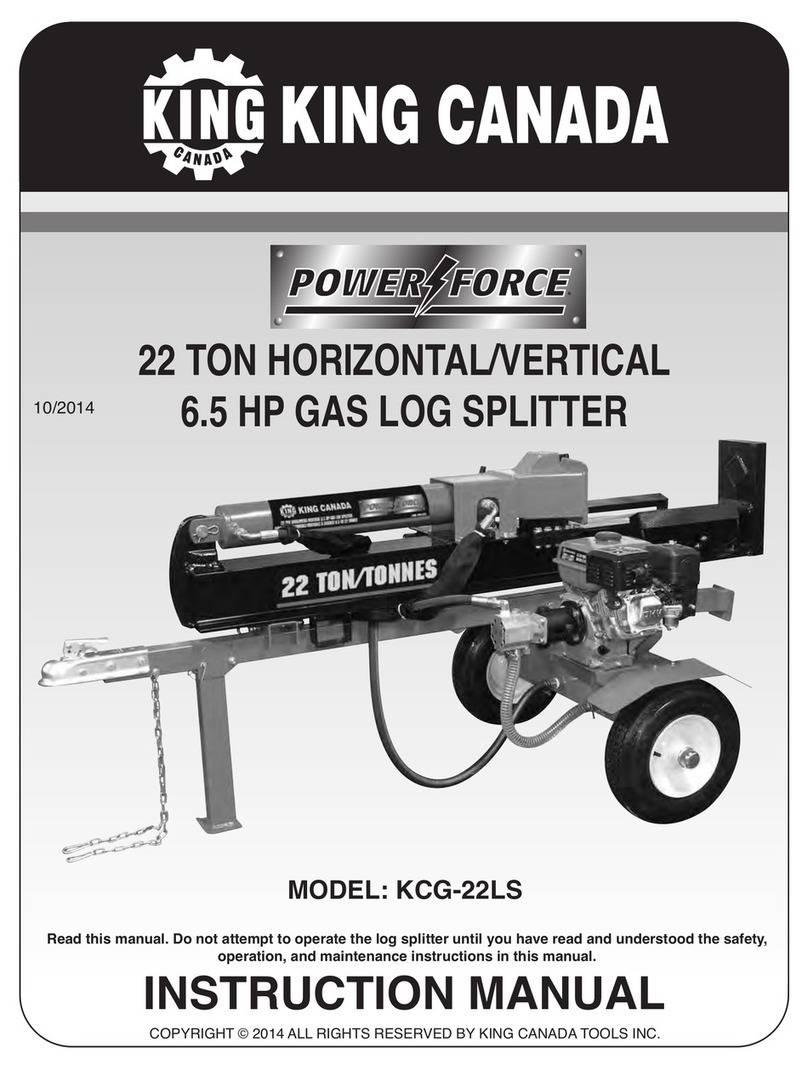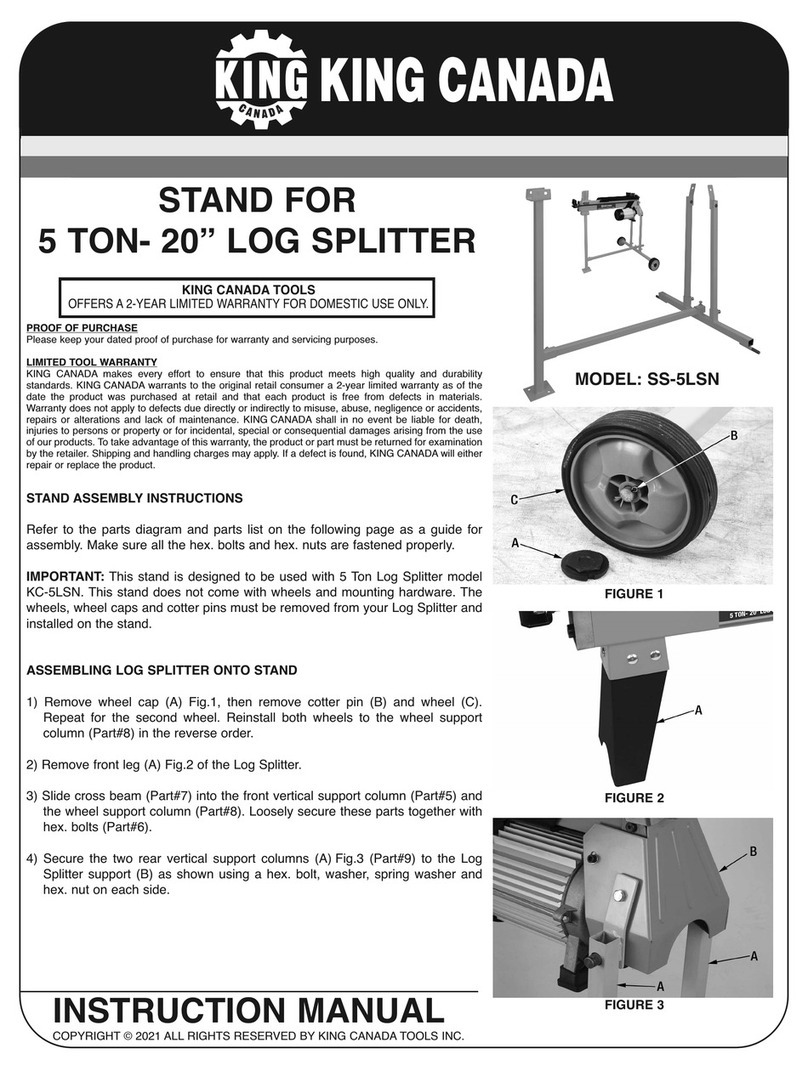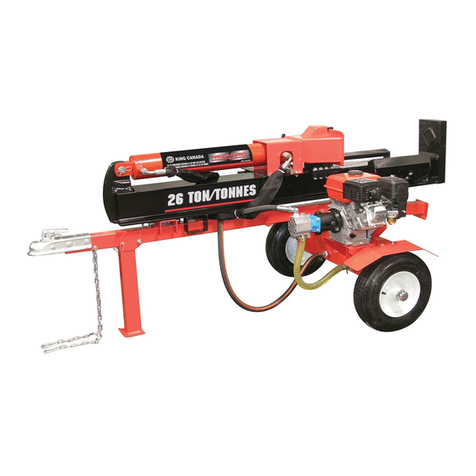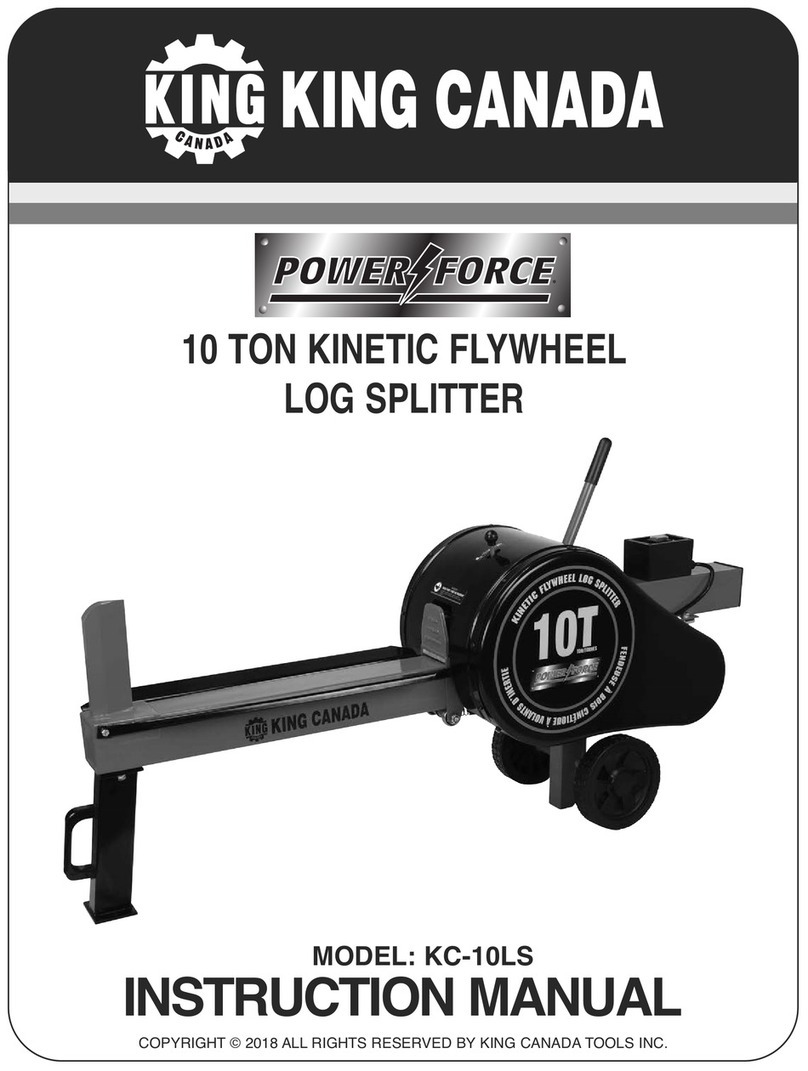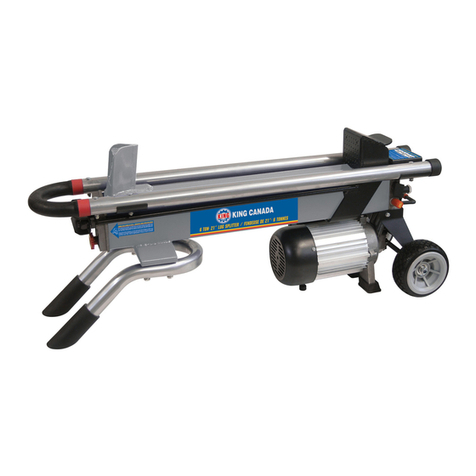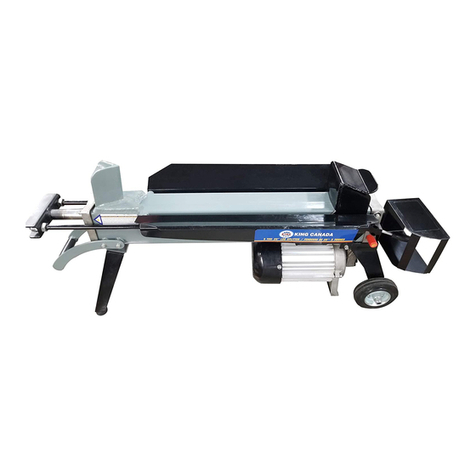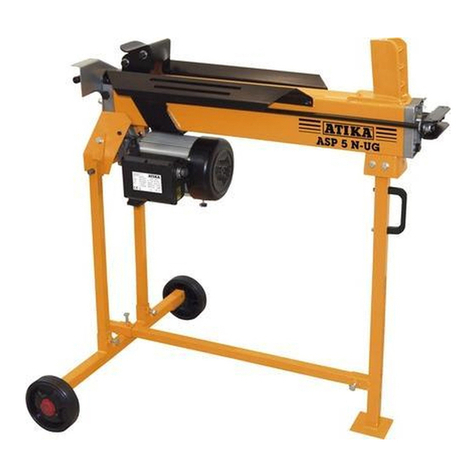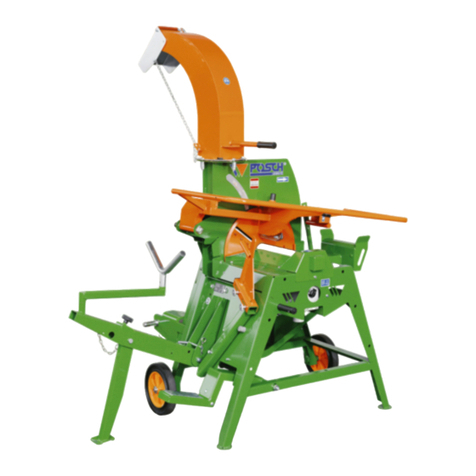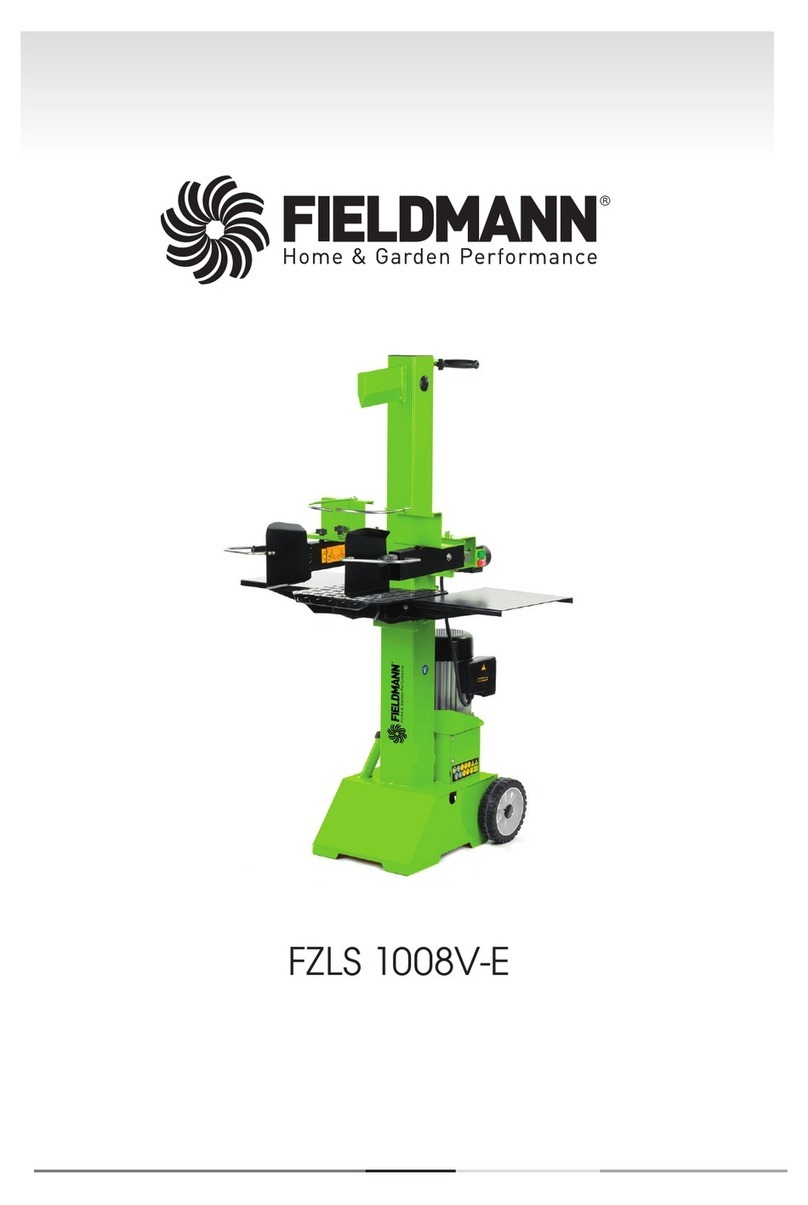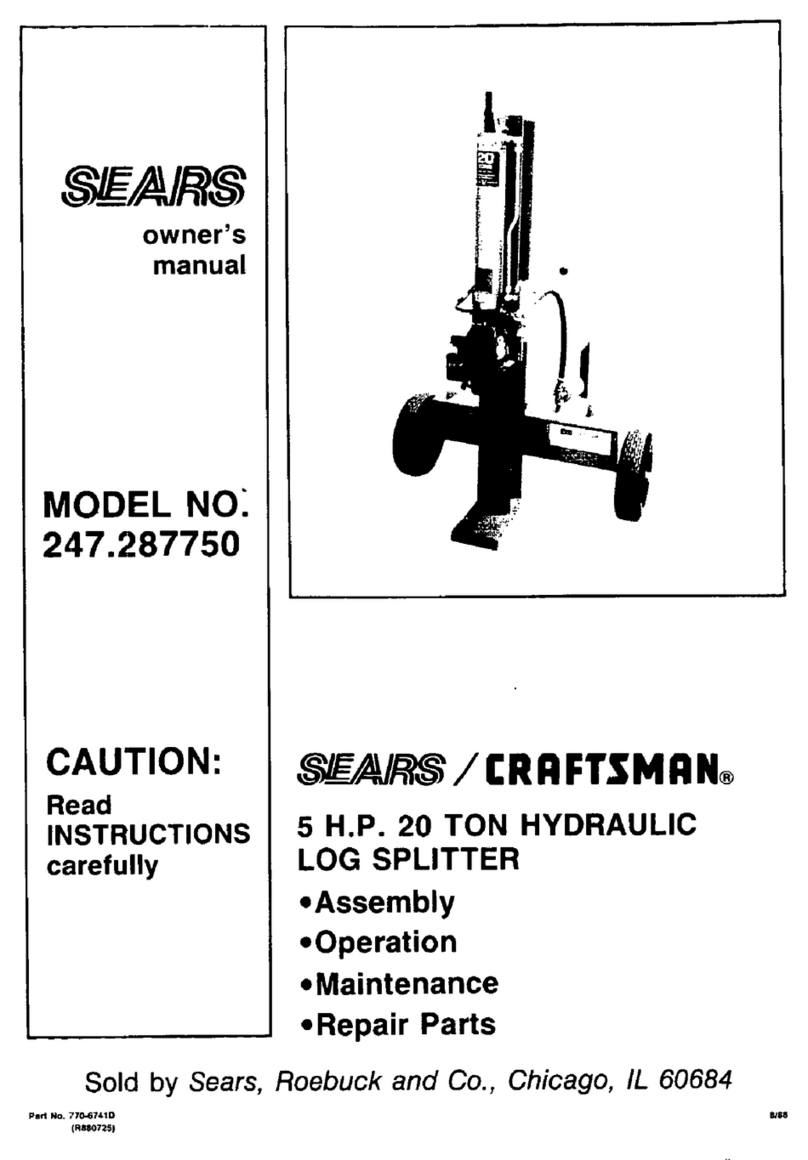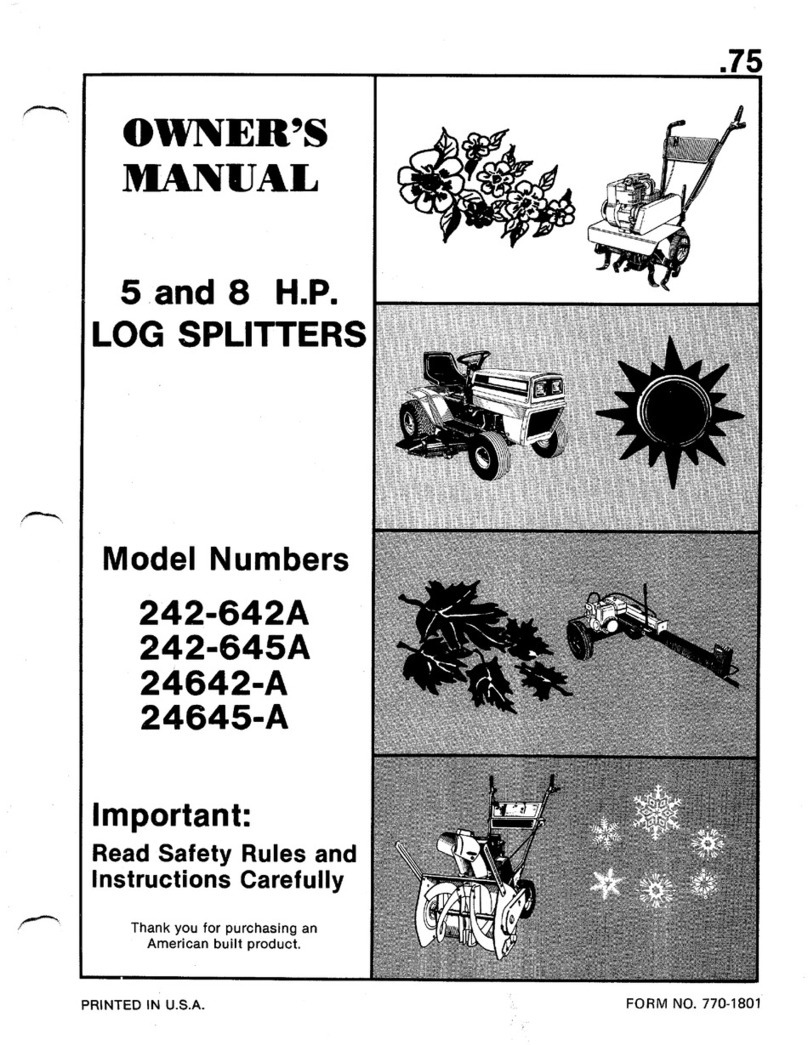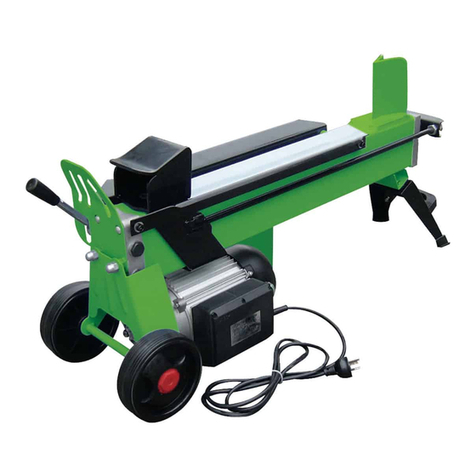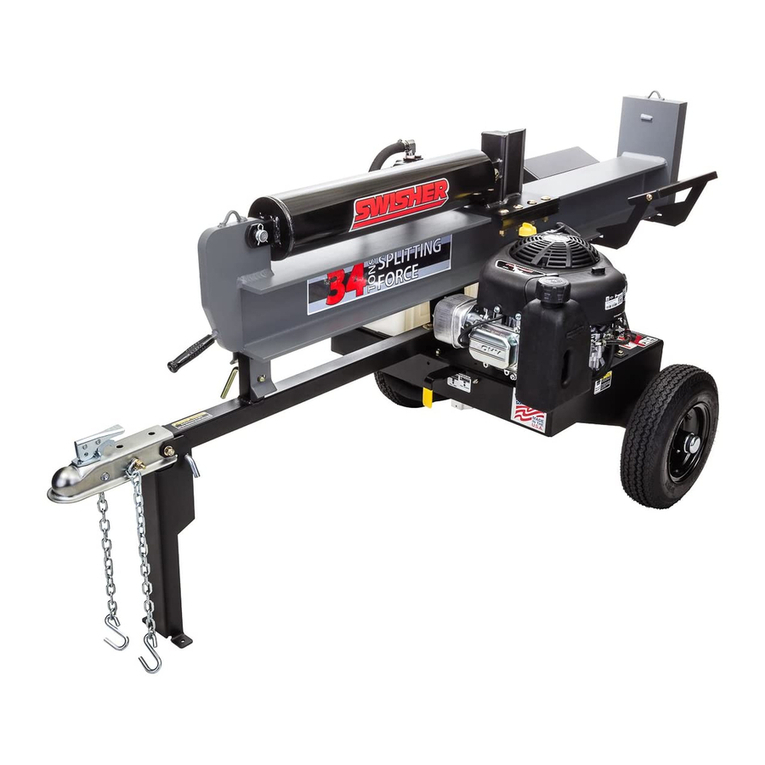
BASIC & SPECIFIC
SAFETY PRECAUTIONS FOR LOG SPLITTER
1) All operators of this equipment must read and completely understand
all safety information, operating instructions, maintenance and
storage instructions. Failure to properly operate and maintain the log
splitter could result in serious injury to the operator and bystanders
from moving parts that can crush or cut, flying objects, burns, fire or
explosion, escaping high pressure hydraulic fluid, or carbon monox-
ide poisoning in particular, be aware of the following hazards.
-Crush and Cut Hazards
Moving parts can crush and cut hands and fingers. Keep hands clear
of endplate, wedge, logs, and log strippers while splitting.
-High Pressure Hydraulic Fluid Hazards
High fluid pressures and temperatures are developed in hydraulic log
splitters. Hydraulic fluid escaping through even a pin-size hole opening
can puncture skin and cause severe blood poisoning. Inspect hydraulic
system regularly for possible leaks. Never check for leaks with your
hand while the system is pressurized. Seek medical attention
immediately if injured by escaping fluid.
-Fire Hazards
Keep a fire extinguisher with you that is rated for ordinary combustibles
and flammable liquids.
2) NEVER remove the hydraulic oil fill cap when the engine is running
or hot. Hot oil can escape causing severe burns. Allow log splitter to
cool completely before removing hydraulic oil fill cap.
3) If a part needs replacement, only use parts that meet the manu-
facturer's specifications. Replacement parts that do not meet speci-
fications may result in a safety hazard or poor operation of the log
splitter.
4) Intended use. Log splitters should only be used for splitting wood
logs, lengthwise with the grain. Do not use for other purposes as
unforeseen hazards may result.
5) Modifications. Never modify or alter the log splitter in any way.
Modifications can create serious safety hazards and will void the
warranty.
6) Engine speed. The maximum engine speed is preset at a safe limit.
Never attempt to modify the engine speed setting to run at a higher
speed.
7) Fuel/exhaust system. NEVER modify or add to the exhaust system,
fuel tanks, or fuel lines. Fire can result.
8) Pressure setting. NEVER increase the pressure setting of the pump
or control valve.
9) Daylight only.Only use the log splitter in daylight so you can see
what you are doing.
10) Adjusting / repairing. Always make sure the engine is off before
cleaning, repairing or adjusting the splitter. Move control lever back
and forth to relieve system pressure before changing or adjusting
hydraulic system components such as hoses, tubing, fittings or
other components.
11) Wear the following protective clothing and safety gear:
-Eye protection. Always wear safety glasses or goggles when
operating. Pieces of log may fly out and serious eye injury can occur.
-Boots. Falling logs can crush feet. Always wear safety shoes or heavy
boots when operating or helping to load logs.
-Gloves. Wear snug fitting gloves without drawstrings or loose cuffs.
-Hearing protection. The use of earplugs or other hearing protection
device is recommended.
-No Loose / dangling clothing. Loose or dangling apparel can
become entangled in moving parts. Never wear jewelry or loose-fitting
clothing.
12) Block the wheels to prevent unintended movement of the log
splitter. Check;
-The outrigger legs are both locked in the DOWN position.
-The wheels are blocked.
13) Never place your hands or any part of your body between a log and
any part of the log splitter.
14) NOTE for vertical position loading: Place the log on the endplate
and turn it until it leans against the beam and is stable. If the log is
too big or oddly shaped, stabilize the log with wooden shims
between the log and endplate or ground. DO NOT use your leg or
knee to stabilize the log. NEVER stabilize the log by placing your
hand on top of the log.
15) Wedge moving. NEVER load or unload logs while the wedge is
moving.
16) Straddling / reaching across. Never straddle, reach across, or step
over the beam while the engine is running and the log splitter is in
the horizontal position. You could trip, actuate the controls, and get
seriously injured.
17) Unsplit log pile. Do not pile logs to be split in a place that will make
you reach across the log splitter in order to load them.
18) Square log ends. Logs that are not cut square can slide out while
splitting and become a safety hazard or cause excessive force to
log splitter components. Use a chainsaw to cut logs square on each
end before attempting to split them.
19) Single log. Never attempt to split more than one log at a time.
Pieces of log can unexpectedly be thrown from the machine
causing serious injury.
20) Split along grain. Do not use the log splitter to split logs across the
grain. Doing so will damage the log splitter and could also cause
pieces of log to be thrown, injuring the operator or bystanders.
21) Forked logs. Splitting forked logs can cause damage the log
splitter. Trim the forked log with a chain saw prior to splitting the log.
22) Changing splitting position. Do not change splitting positions
(horizontal/vertical) with the engine running. You may contact the
muffler and receive serious burns. Be careful to avoid contact with
hot muffler even after the engine is turned off.
23) Change hydraulic oil annually or every 100 hours. Relieve hydraulic
system pressure by moving the control lever back and forth
several times.
24) General safety while moving;
-Horizontal position. Make sure the log splitter is secured in the
horizontal position before moving the log splitter. DO NOT move the log
splitter when it is in the vertical position because it will be unstable and
could tip.
-Hills. Do not move the log splitter up or down hills by hand – use a
towing vehicle.
-Engine off. Never move the log splitter with engine is running.
-No riding. Never allow anyone to sit or ride on the log splitter.
-No cargo. Never transport cargo or wood on the log splitter.
25) Safety during towing;
-Read instructions. Review towing safety instructions in your towing
vehicle manual.
-Securely attached. Be sure the log splitter is securely attached to the
towing vehicle before towing.
26) Never try to split logs larger than the rated capacity. This could be
dangerous and may damage the machine.
